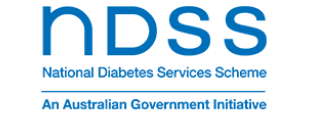Type 1 diabetes affects about 10–15% of all people living with diabetes.
Type 1 diabetes is a condition where there is too much glucose (sugar) in the bloodstream. Glucose is an important source of energy for your body. It comes from carbohydrate foods that you eat, such as bread, pasta, rice, cereals, fruits, starchy vegetables, milk and yoghurt. Your body breaks down carbohydrates into glucose, which then enters your bloodstream.
Insulin is made in your body by the pancreas. Insulin is needed to allow glucose from the bloodstream to enter the body cells to be used for energy.
Type 1 diabetes occurs when the pancreas can’t produce insulin. This happens usually because the body’s immune system destroys the cells that make the insulin (beta cells).
Type 1 diabetes is managed by replacing the insulin the body can no longer make. Insulin is given by injection or by using an insulin pump. A doctor will work with a person who has type 1 diabetes to decide on the type of insulin is needed, and will recommend how often insulin is needed. As well as taking insulin, a person will need to check their blood glucose levels regularly, follow a healthy eating plan, and stay physically active.
Managing type 1 diabetes on a day-to-day basis is important for keeping blood glucose levels in the target range. This helps a person stay well in the short term and reduces the risk of long-term complications, such as damage to the eyes, kidneys, nerves and blood vessels.
The exact cause of type 1 diabetes is unknown. We do know that some people carry genes that make them more likely to develop type 1 diabetes. Type 1 diabetes occurs in these people when something triggers the immune system to start destroying the beta cells in the pancreas that produce insulin.
Type 1 diabetes is usually diagnosed in younger people, but it can be diagnosed at any age.
Nothing can be done to prevent or cure type 1 diabetes, but researchers are currently working on this. If type 1 diabetes is managed well, you can continue to lead a healthy life.
The most common symptoms of undiagnosed type 1 diabetes include:
- being thirsty and drinking much more than usual;
- going to the toilet (to pass urine) more often;
- feeling tired and low on energy;
- unexplained weight loss;
- feeling tired and low on energy;
- genital thrush;
- mood changes.
The symptoms of type 1 diabetes can develop quickly and need immediate medical attention. If type 1 diabetes is left untreated, diabetic ketoacidosis (DKA) will develop.
Diabetic ketoacidosis occurs when the body can’t use glucose for energy, and makes chemicals, called ‘ketones’ to use for energy instead. Ketones cause the blood to become too acidic. High glucose levels result in a loss of body salts and fluids. This is life-threatening and requires urgent hospital treatment.
Type 1 diabetes can occur at any age, but is most commonly diagnosed from infancy to the late 30s. With this type of diabetes, a person’s pancreas produces no insulin. It occurs when the body’s immune system attacks and destroys the insulin-producing cells in the pancreas.
The only treatment for type 1 diabetes is insulin, which is usually injected or infused via a pump.
Type 2 diabetes is by far the most common type of diabetes – in Australia over 90 per cent of people with diabetes have type 2 diabetes. Type 2 diabetes usually affects people aged over 40, however it is becoming more common among younger people. The symptoms of type 2 diabetes are not always obvious and, unlike with type 1 diabetes, they can take a long time to develop.
People with type 2 diabetes either don’t make enough insulin or don’t make insulin that the body can use properly. The cells in the body become resistant to insulin, making a greater amount of insulin necessary to keep blood glucose levels within a normal range. Eventually, the pancreas can wear out from producing extra insulin, and it may start making less and less.
Type 2 diabetes can usually be managed through diet, exercise, and self-monitoring blood glucose, at least in the first few years following diagnosis. However, type 2 diabetes is a progressive condition, and most people will need to take tablets and/or inject insulin after living with it for five to 10 years.







